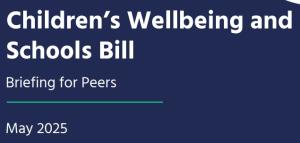When I became Children’s Commissioner for England six years ago, I set out an ambitious vision for a nation where childhood is understood and celebrated and where the voice of all children is listened to at the heart of Government. I had in mind a particular group of children who, in my experience of working with families over the years, I have seen falling through the gaps in the system that is there to support them. The parents struggling with unemployment, unstable housing, mounting debt, depression and alcohol addiction. The babies and toddlers not meeting their early development goals but where nothing is done so that they start school far behind their peers, and never manage to catch up. The children struggling at school because of chaotic home lives or low level special educational needs who start to act up and end up excluded or simply off the radar being educated at home. The kids hanging around with nothing to do in the park or who go missing from care and end up exploited by criminal gangs, at risk of dying from a knife attack or spending years behind bars. The children in care and care leavers who don’t get the right support, living in poor quality, unregulated hostels. Or the children who spiral into crisis and end up behind closed doors, in prison, or on a mental health ward.
Through my time as Children’s Commissioner, I have made it my mission to stop these children being ‘invisible’ to the system. Through my work on childhood vulnerability, we have identified 1.6 million children in families at risk that are falling under the radar, and now our CHILDRN app means that anyone, anywhere can quickly get data on the groups of children at risk in their local area.
In this, my last report as Children’s Commissioner, I set out how the landscape of children’s policy has changed over the last six years, and outline the progress that has been made in addressing some of these concerns. The report also includes new analysis into the ways in which poverty, special educational needs and childhood vulnerability interact to create multiple disadvantage which means fewer than 1 in 6 children who experience all these difficulties get their Maths and English GCSEs.
The pandemic has meant that these children are at greater risk than ever of slipping under the radar. We have already seen an increase in children moving into home education, and a spike in children’s mental health problems. But it has also been a wake up call for our society so that it is much harder for anyone to pretend that these children, these families, don’t exist, or that there are groups of children ‘that we can’t help’. The Covid crisis has created a burning platform for us to create a framework in which Governments at a national and local level, and partners like schools, the NHS and the police, can work together to Build Back Better for these children.
What is needed now is a ‘Covid Covenant’ from us to all our children. A pledge that we will stop trying to fit children and families into neat little boxes labelled ‘mental health’ ‘behaviour’ and ‘poverty’ and that we will create a long-term strategy to identify the children and families who need extra help from the early years and to deliver impactful long term help so that all our children are able to thrive.



